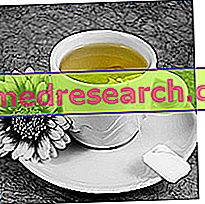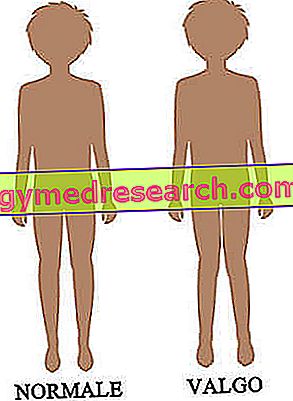
The mind and Ayurveda
Like the body, the mind has its own constitution. The three types are: sattvic, rajasic and tamasic.
- The sattvic mind, without contamination or negativism, is the purest state to which the mind can aspire, and it is very rare. Sattvic types have only pure and positive thoughts, both about themselves and others. They have self-confidence and high self-esteem, without being selfish. They respect others but do not let others trample on them. They have a clear idea about what they want and move to get it. They do not cause suffering to any living being. They enjoy excellent physical health, preferring a pure diet free from artificial stimulants. This state does not come naturally to most people; however, the practice of meditation and the noble eightfold path of Buddhism help us to move in this direction. Ayurveda assists sattvic aspirants with advice for a suitable diet, meditation, exercise, thinking and understanding. Although we may never reach it, we should all aspire to the satirical state.
- The rajasic mind is passionate and angry. It can be violent, partial and subject to irrational mood swings. The rajasic types seek stimuli of all kinds, they love rich and spicy food, going out for food, theater, cinema, novels, alcohol, gossip and extroverted behavior. They are restless, always looking for new challenges and experiences, and are never satisfied. They are often intelligent and creative, but they are never at peace, neither with themselves, nor with the world.
- The tamasic mind is low and ignorant. Tamasic types like processed and unhealthy foods and have no vitality or vigor. They show no intelligence, they are ignorant, irrational, greedy and full of destructive thoughts and ideas.
Both rajasic and tamasic attitudes are considered corrupt and can cause ill health. The rajasic and tamasic elements in our lives remove the sattvic state from us.
Uniqueness of the individual
In order for Ayurvedic treatments to be successful, it is essential that the doctor and the patient recognize the latter's constitutional type. Everyone's constitution has three main elements: doshas, genetic inheritance and karma.
Doshas are the predominant energies that determine the basic type of the body; from parents and antecedents we inherit characteristics and, in some cases, a predisposition to some diseases and conditions; similarly, through karma, we carry with us in this existence aspects and propensities deriving from previous incarnations.
The three factors interact to give each individual a constitution with a unique character, established at the time of our birth and immutable.
Over time, however, the constitution can be influenced by factors such as diet, habits, lifestyle, the environment, exercise, work, hormonal changes and stress.
I marma
Ayurveda therefore considers each individual as unique, with an individual constitution, both physical and psychological, determined by genetic inheritance, and influence of doshas and karma. Although many changes occur in the body and mind throughout life, in essence, the person remains the same from birth, unless a dosha imbalance with an insane lifestyle is imposed.
Ayurveda identifies a factor that links the various stages of our lives and maintains our individual identity. This factor is called bewilderment, which we can translate with "memory", which permeates every single cell of our body.
It is better to learn the art of meditation from an experienced teacher. However, there are many guidelines that can help you get started.
Always try to meditate at the same time and place, every day. Breathe effortlessly, with a regular rhythm, from the abdomen.
Start with 5 minutes of deep breaths, then breathe more lightly. Keep warm, and if possible, sit in a place where you are not disturbed or distracted, and which is not usually used for other purposes (eating, working, etc.).
Sit on the floor with legs crossed, hands stretched out, palms up.
The eyes can remain indifferently closed or open; however, if they are open, it is necessary to focus attention on a relaxing and pleasant object to look at, or that has a special meaning for us.
Trying to focus the mind on one thought, not to drift with thought.
Choose your particular mantra, which can be a syllable, a word or a sentence. It must be repeated, in silence or aloud, like a chant, and must not necessarily have a precise meaning. The important thing is its simplicity. A widespread mantra is "OM", which has a powerful vibrational sound when it is repeated continuously.
Meditation with breathing (Anapanasathi-bahaviana)
Try to focus your attention entirely on the breath, focusing on inhalation and exhalation. Continue like this for 15 minutes in the morning and 15 minutes in the evening.
This method is widely recommended for those suffering from heart problems, high blood pressure and stress-related illnesses.
Furthermore, Ayurveda teaches us that to be healthy in this life we must allow vital energy, or prana, to flow unimpeded. If our condition is inadequate, or if we indulge in thoughts and attitudes that undermine our lifestyle making us full of resentment and anger, that energy becomes blocked. Our body and our mind can no longer function harmoniously, making it impossible for us to live our lives to the full.
The energy points matrix
In the body there are numerous points of energy (107 in total), which stimulate some of its functions and maintain its health. Although these points (known as marma points) cannot be identified using scientific instruments, it is believed that there is sufficient evidence to be able to state that if one or the other does not work or stops, the disease will occur. Most of these points are found in vital areas such as tendons, major arteries and veins, and major joints.
Ayurvedic texts suggest that marma points are parts of the body where two or more important systems meet, such as nerves or blood vessels, bones and nerves or muscles, ligaments and joints.
A marma point is the site of concentrated energy, and damage to any of these points can lead to serious illnesses. There are three main marma centers: the head, the heart and the bladder. Violent injury to any of these marma centers can cause death.
The legacy of past lives
Ayurveda teaches that marma points can be used to manipulate the forces of vata, pitta and kapha. In some people, the flow of prana through these points may be blocked by "memories" from previous lives.
Marma therapy
The care applied to marma points can influence bodily functions in a manner very similar to what acupuncture ( marma puncture ) does.
Ayurvedic diet
This topic is inserted with a pure hint, with the sole intention of making people understand the philosophy that links health and nutrition in a single concept in Ayurveda. The following table is an illuminating example.
| THE TEN RULES OF AYURVEDA IN FOOD FIELD (valid both for the lean and for the robust) | |
Avoid foods cooked the day before and stored overnight because they have lost their vitality | Avoid cold foods and beverages, as they interfere with the digestive function |
| Do not eat before having digested the previous meal | Adjust meal times with the sun. Make a truly complete meal only when the sun is high in the sky |
| Drink 4-5 cups of warm water during the day to clean the stomach and promote peristalsis | Do not suppress the natural needs concerning the bowel and bladder |
| Eat meals in a quiet and peaceful environment, possibly sitting and avoiding distractions | Within the meal consume raw foods before and those run after; do not end the meal with a heavy substance, such as a cake or a banana |
| At the end of the meal, sit quietly for a few minutes to give the right start to digestion | Listen to your body a lot and feel its needs. To do this gather for a few moments before starting the meal. |



